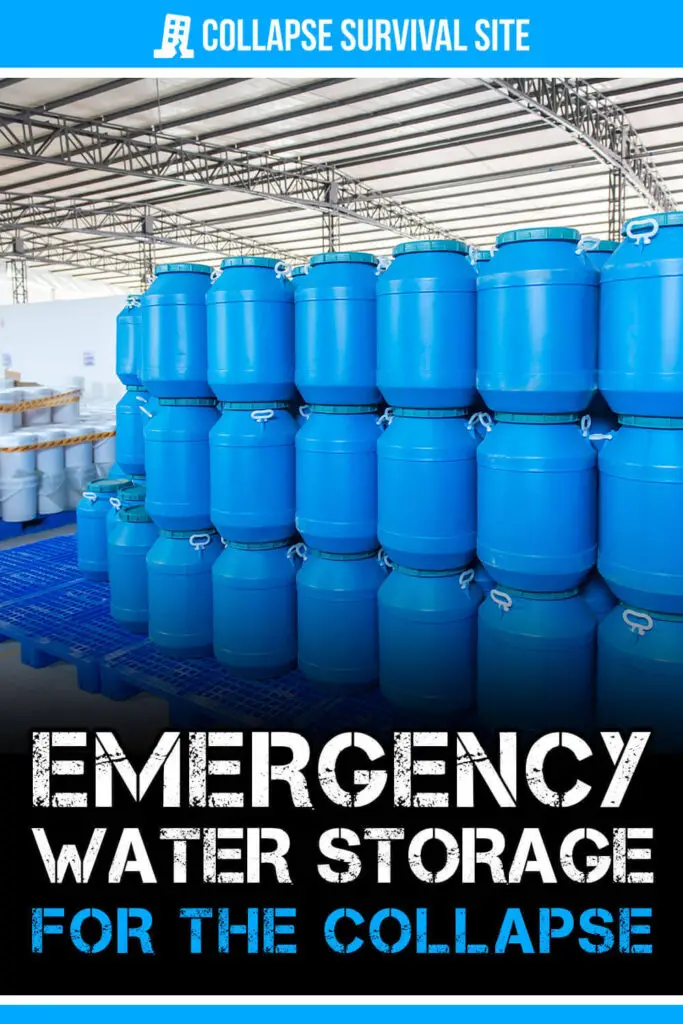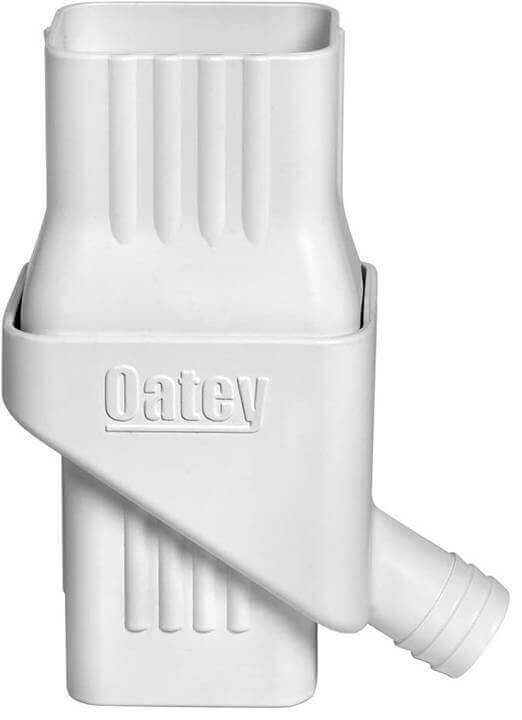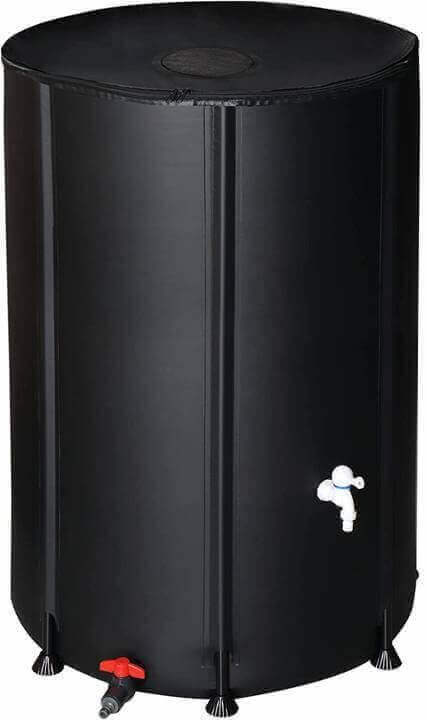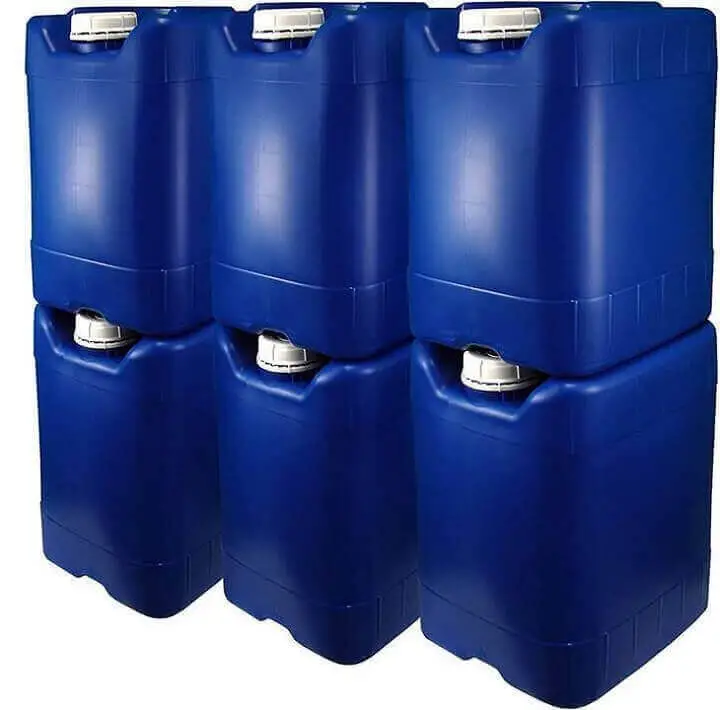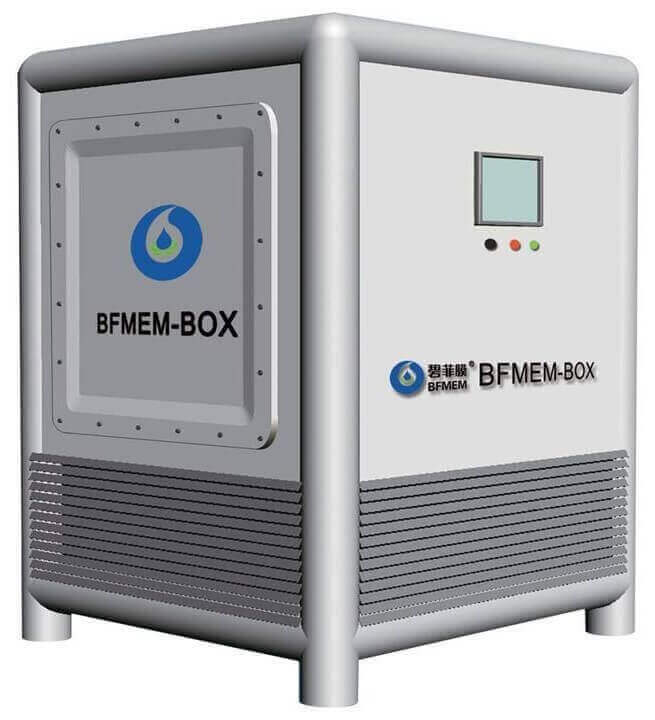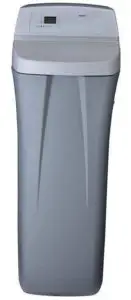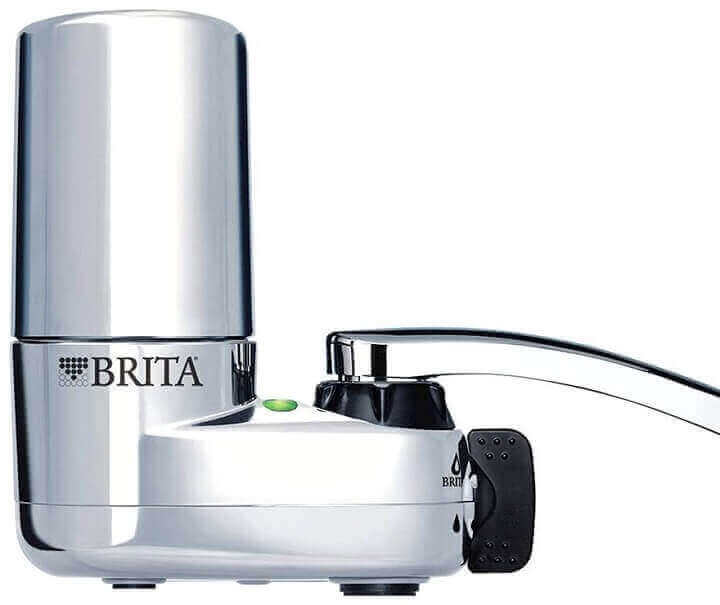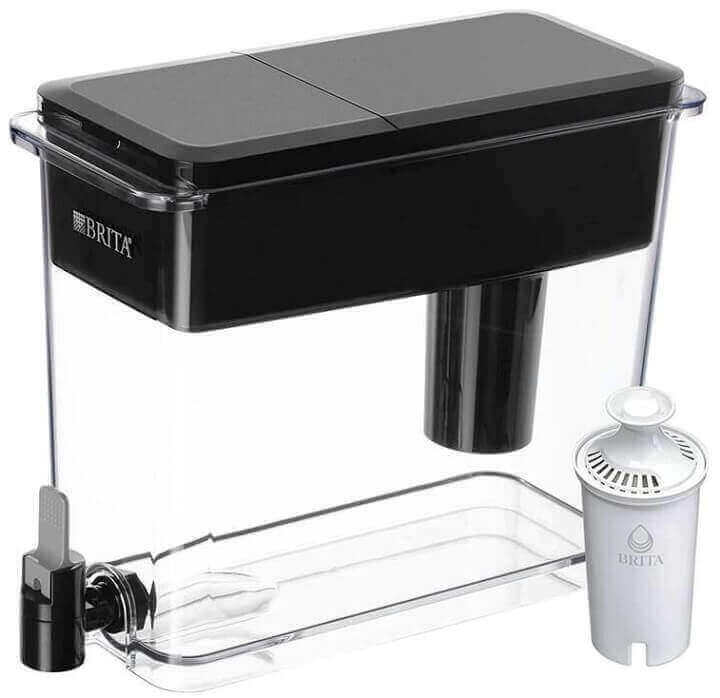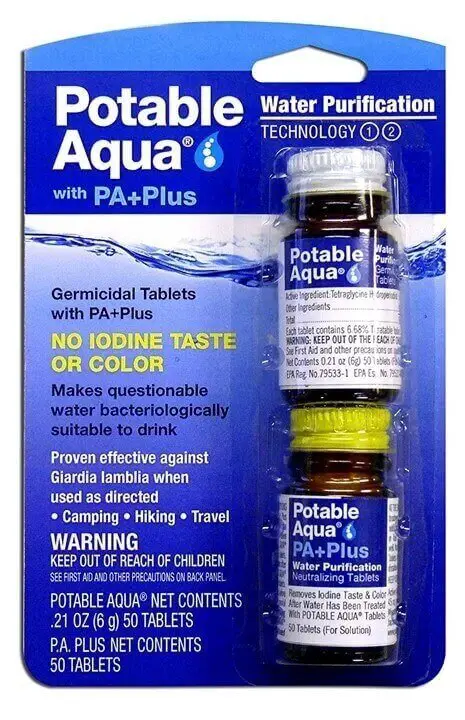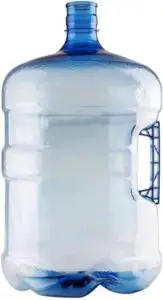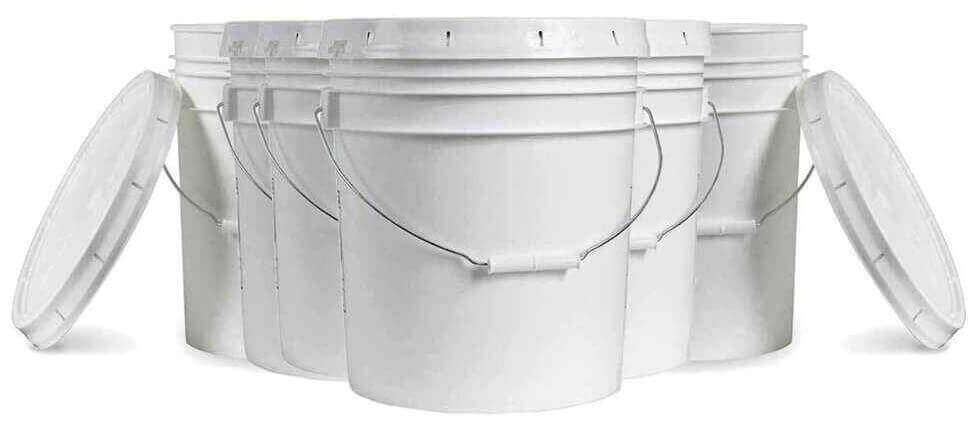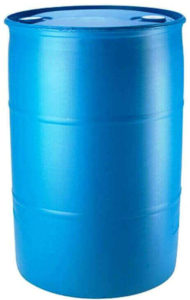Estimated reading time: 28 minutes
Most people preparing for the collapse of society tend to focus on food. What they may be missing is that they can only survive 3 days without drinking water. In the grand scheme of things, water storage and collection may be more important than any other survival need.
Unlike stockpiling food, water stockpiling and storage has some limits. The average American uses 100 to 175 gallons of water a day. That’s the common usage assuming ample water supplies and availability, but even on a pure survival ration, one person requires at least a gallon of water a day.
For an average family of 4 that, comes to almost 30 gallons a week, and that’s just for drinking water. That doesn’t include water for cooking, washing, or any of the other uses we have for water on a daily basis. And here’s the dilemma with water storage.
You can stockpile food to make meals over a significant period of time in a relatively small space, assuming you have foods stockpiled with high nutrient density and calories. But water is different. Water is water.
It has a given volume in terms of size and weight, and there’s no such thing as concentrated water. This gets to one of the most critical aspects of any survival preparedness: sustainability.
Want to save this post for later? Click Here to Pin It On Pinterest!
Water Sustainability
You need to be able to not only store water but replenish it on a regular basis. Even the largest water storage tanks will eventually run dry. Sustainability is important with food as well, but stored water will run out long before your stored foods.
Given that we can’t live 3 days without water, the whole subject of water collection, purification, and storage looms as one of the greatest challenges to survival after the collapse. Complicating matters is that our water is not only getting more expensive but, in some parts of the world, impossible to find.
Today’s Harsh Water Realities
- Rivers around the world are drying up from the Mississippi to the Colorado River to the Nile to the Amazon to the Danube to the Yellow River in China.
- Lakes around the world are disappearing across every continent.
- Lake Mead and Lake Powell, the two largest reservoirs in the United States are at their lowest levels.
- People in countries around the world have lost almost all access to safe drinking water. It’s currently estimated that 1 in 3 people in the world don’t have access to safe water.
Where Has All the Water Gone?
Drought is the easy answer. Climate change is affecting areas around the world, and water scarcity is often the outcome. Around the world, rivers, lakes, and reservoirs are shrinking.
Worse, deep underground aquifers that hold billions of gallons of water miles deep are being tapped for irrigation exhausting their supply and leaving our water world without fresh water.
But like so many things, it’s more complicated than drought.
Earth Water Facts
- Farming represents the greatest use of water. In fact, standard irrigation practices waste more water than they actually use. It usually results in trenches and channels of water arbitrarily directed toward crops in the ground with the assumption that some of the water will reach the roots of the crops. Most is lost to evaporation or the ground in general.
- Pollution has compromised water for drinking. Even common agricultural fertilizers have contaminated water, and the contamination from improper sewage treatment and practices, industrial chemicals and heavy metal flushed into rivers and lakes, and the hazardous chemicals leaching from landfills have all contributed to a toxic water supply in areas around the world.
- Climate change continues to affect our water supplies. Droughts continue to affect regions around the world and in some areas, flooding promises no solution as flood waters absorb toxic contaminants and funnel them back to rivers and lakes. Flooding would seem like a solution, but in an era of climate change, the flooding is often abrupt and infrequent, but just enough to flush toxic materials from a flood plain into aquifers, reservoirs, and rivers.
- Even rainwater has let us down as our most promising source of available water. Atmospheric contamination from airborne industrial pollutants, emissions from internal combustion engines, and other airborne sources have made much of our rainwater far from pure. Forever chemicals taint all of our water supplies from the oceans to a summer drizzle of rain. As a natural water source, rain may continue to be the purest choice, but even bird droppings and other airborne contaminants on tree leaves can make the simplest collection of rainwater more complicated.
But Aren’t We a Water Planet?
Most definitely. But most of the water on Earth is saltwater. And yes, saltwater can be desalinated to create fresh water, but the process is complicated and expensive on a large scale.
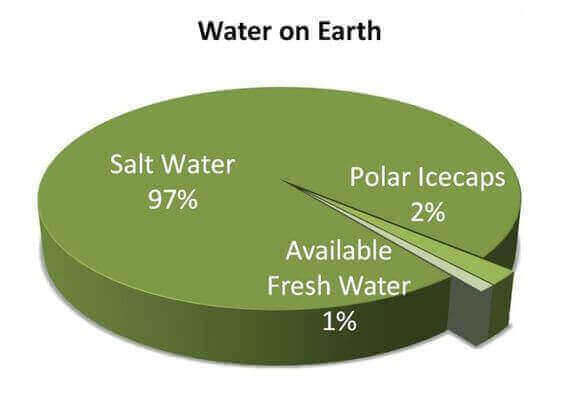
Even then, our oceans have become cesspools for garbage and sewage as countries around the world continue to use oceans as a vast, invisible dump, resulting in massive floating islands of garbage and debris.
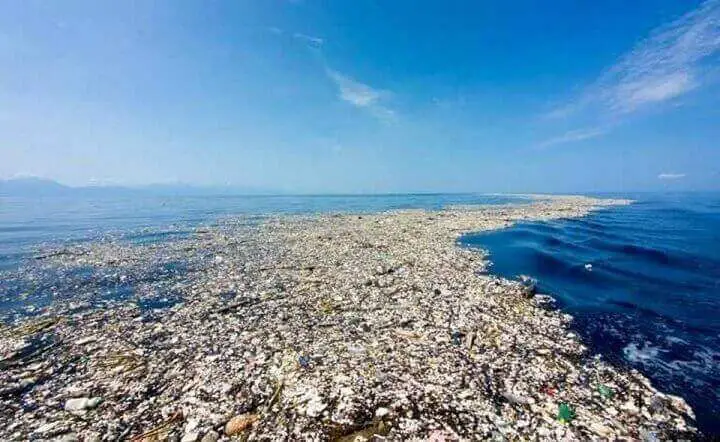
As far as fresh water is concerned, most of it is locked up in the icecaps. Much more is deep underground, and the surface water that seems so abundant is becoming increasingly polluted and drained away for agriculture, industry, and continual evaporation.
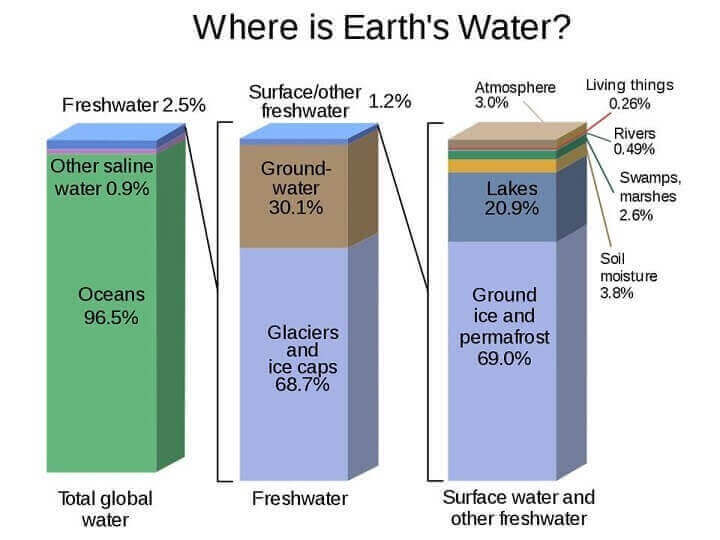
And that surface water only represents 1% of all fresh water on Earth. According to the National Geographic Society, only 1.2 % of the total freshwater on Earth is drinkable, and that amount is diminishing rapidly.
And It’s No Easier At Home
Some people have wells, and others depend on municipal water supplies. Both are getting worse. Aquifers supplying wells are diminishing or getting polluted, and municipal water is getting more and more expensive.
Worse, even municipal water supplies are becoming compromised with e-coli contamination and other chemicals and heavy metals. As wells run dry and municipal water becomes more expensive, it represents a closing gap of water insecurity. After a collapse of basic services and local infrastructure, that gap will increase and our local water may simply run out, be unavailable, or become the most expensive utility bill we have.
In the ultimate irony, lack of water has caused the collapse of societies at least five times in the past.
Exploring Solutions
Emergency water security is defined by the ability to gather and purify water and effectively store it in a safe way. We’re going to cover 3 basics steps for water security following a collapse:
- Water Harvesting
- Water Treatment, Filtering, and Purification
- Water Storage
Water Harvesting
Rainwater
For most people around the world, rainwater is the most democratic water source. It’s delivered to your home, and it’s free. For many people, it’s the only reliable source of water assuming, droughts don’t dominate our weather.
The trick is having the design and the equipment to capture rainwater and funnel it to a storage tank. The roofs of homes and outbuildings are the best and easiest options given their size and the way they are designed to direct water to gutters and downspouts.
The simple addition of a specialized downspout allows you to direct the water towards a length of attached hose or tubing that can easily deliver it to a collection barrel or tank.
Many rain collection barrels have spigots towards the bottom that make drawing water easier.
Other solutions include the use of suspended tarps. This is an effective solution for someone living in an apartment where a patio or other outdoor access can allow for at least some level of rainwater collection. One constant caution is to never assume that unpurified rainwater is always safe to drink.
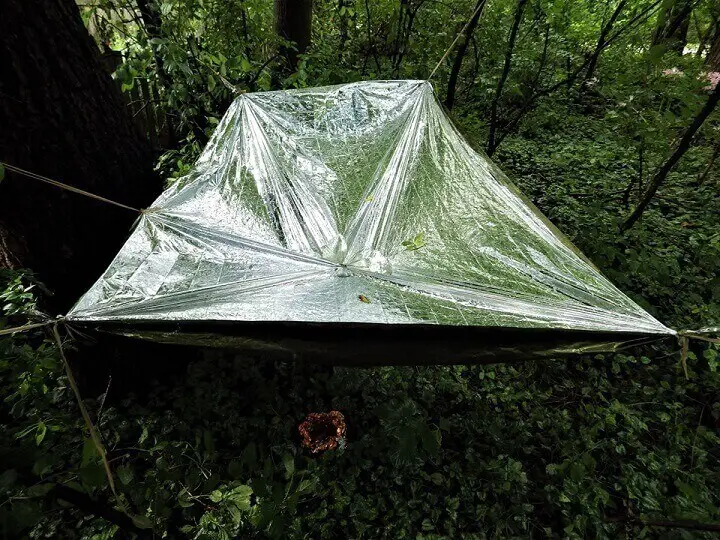
Finally, some people have success capturing and channeling rainwater from natural areas including cliffs, large rock sheets, or mountains in wilderness areas. Look for the runoff and figure out some way to capture and direct it to a collection barrel or jug.
The only downside is that it may become contaminated as a result of running over the surface of the ground. Make sure you always filter your rainwater.
Springs and Creeks
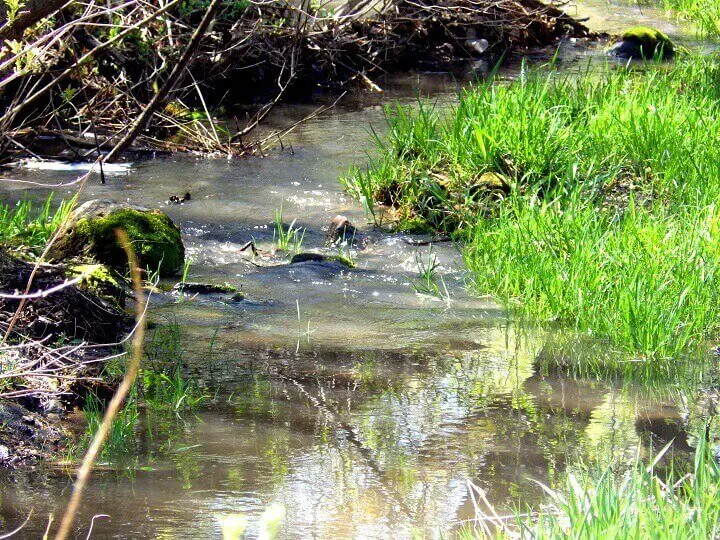
Flowing water is another good option for a natural water source as opposed to the still or stagnant waters in a pond or swamp. The flow of water aerates it and to some degree minimizes the growth of harmful bacteria.
On the downside, any flowing water is exposed to a range of potential contaminants along its course.

The water tends to be purest towards its source, but as it travels it has the potential to pick up runoff from fields, dumps, sewage, and other contaminants. Generally, the smaller the spring or creek and the closer to the source, the better the water quality.
Most of us don’t have a convenient spring, creek, or other natural water source in our backyards. That means we have to transport any water we harvest. One solution is portable and stackable 5-gallon water jugs.
The water will still need to be filtered and purified, but at least you’ll have a chance at getting the water home. Better yet, you’ll have a portable way to transport water in the event of a bug out.
Another possible solution is a RAM pump if you live in close proximity to a spring, creek, or river with a suitable flow of water to power the RAM.
RAM pumps will deliver water up an incline to collection barrels or drums and will pump and run 24/7 without any external power as long as the current flow is consistent and the pump is not clogged with debris.
Ponds and Lakes
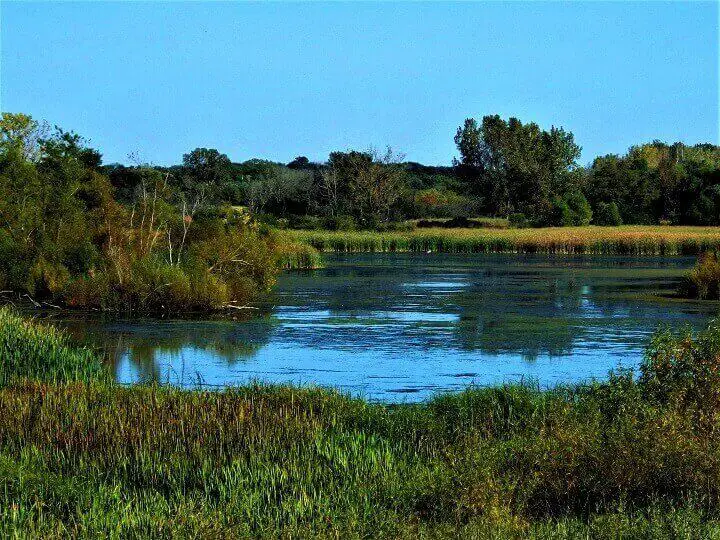
The quality of water from a pond or lake is proportional to its size and location. Small, stagnant ponds are often prime breeding grounds for bacteria while larger lakes are more resilient to bacterial breeding, especially if they are deep and have any significant wave action.

Location and temperature also have effects on water quality. Cold, deep water lakes will typically offer less contamination especially in high, mountainous areas. Ponds during summer are particularly prone to bacterial growth, and any harvest needs to be significantly filtered and purified.
Rivers
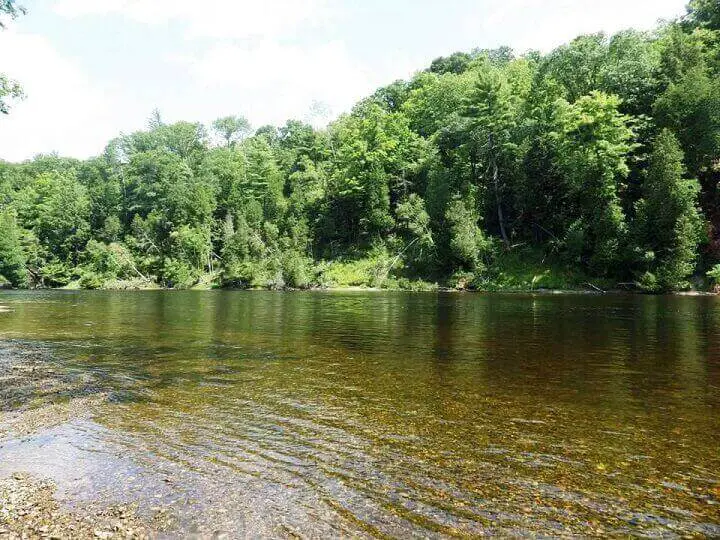
Rivers continue to be a source of water for municipalities, agriculture, and industry. The relative purity of the water depends a lot on location, and the amount of pollutants that find their way into river over its course. Even if the water looks clear and clean, it should be filtered and purified before drinking or storing.
Wells

If the power is out and you have no way to generate electricity, you can still harvest water from a well standpipe using a galvanized well bucket.
It involves using a long, metal tube suspended on a rope that is lowered into the well standpipe. A slip valve at the bottom of the pipe allows water to enter, and as the well bucket is lifted, the weight on the rope closes the valve, allowing you to retrieve 2 gallons of water at a time.
If all else fails you can try digging your own well, but you have to understand the way to read local geography to start in the best spot.
Swimming Pools
Any size swimming pool can not only hold water but serve as a great catch basic for rainwater funneled from rooftops. A cover over the pool will prevent leaves and sticks from collecting. Swimming pool water is safe to drink, but you need to remove the chlorine and purify it the way you would treat any other harvested water.
Grey Water
Grey water is water that has already been used and can be reused for another purpose. Water that has been used for bathing can be used to flush a toilet. Water that has been used to wash dishes or laundry can be upcycled to water a garden, clean the mud off vehicles and equipment, or for any other use other than drinking or cooking.
In a time when water is scarce, grey water is a required solution for additional water needs. It can be stored in 5 gallon buckets, but make sure it is clearly marked as grey water and kept in a place that’s apart from purified water storage.
Salt Water
Salt water can be desalinated either through captured evaporation or desalinators.
Desalinating is a complicated process, and desalinators are not cheap, but if all you have easy access to is salt water, it may be a necessary expense.
PH as a Water Quality Factor
Water pH also affects a water biome with acidic mountain streams sometimes known as “freestone” streams, offering less biological contamination due to the acidic nature of the water.
Streams, creeks, and rivers that have a higher and more alkaline pH will often become a prime environment for plant growth and a breeding ground for aquatic life including bacteria. These water sources are sometimes known as “limestone” creeks and rivers, and any lake or pond they feed will have significant bacterial populations.
A more important aspect of water pH is its affect on overall water quality.
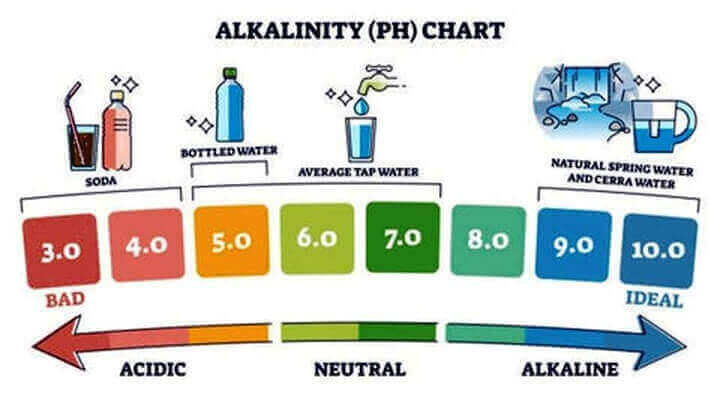
The pH scale actually is numbered from 1 to 14, but things at the extreme ends of the scale fall in the category of battery acid and lye. This particular chart demonstrates various liquids including waters and their general quality from bad to ideal. Generally, water that measures towards the alkaline end of the pH scale is better quality than water that measures towards the acidic end of the scale.
What’s critical is that you have the ability to test your water after harvest, test again after filtering, and purification and again after any length of time in storage.
There are water test kits that test across a variety of measures from bacteria to heavy metals and pH. Use them—especially if you are harvesting from natural sources like ponds, lakes, and rivers.
Water Treatment, Filtration and Purification
The degree to which anyone treats, filters, and purifies water depends on the source and any indications from testing. Well water is the source typically treated by a variety of systems, but even water from municipal supplies is worth evaluating for potential treatment or purification. Water derived directly from natural sources like lakes, rivers and creeks should always be tested regularly and at least filtered and purified.
This is especially true during emergency situations following any disaster when natural water sources are subject to pollutants from flooding, debris, or other contaminants introduced to the water sources as a result of the disaster.
It’s also important to understand the 3 ways that water can be made safe to drink and generally safe to use.
1. Treatment
Treatment is a term often used to describe a process that removes metals and other chemicals from water, particularly iron. In some cases, it does nothing more with the assumption that further processes will improve the overall quality of the water. Iron filters and water softeners are an example of water treatment.
2. Filtration
Filtration typically defines a process that removes particulate matter from water. It’s particulate matter that often makes water cloudy or colored, and effective filtration should leave the water clear and transparent. However, just because the water appears to be clean and clear doesn’t mean that it’s safe to drink until it has been effectively purified.
3. Purification
Purification is often the final step in water treatment. It is designed to kill bacterial, viral, and fungal contaminants to make the water safe to drink. Some water filters combine all 3 steps with various filters designed to treat, filter, and purify the water. It all depends on how contaminated the raw water is and the amount of water that needs to be processed.
Methods Used for Water Treatment, Filtration and Purification
Iron Filters
Iron filters are typically used to treat well water and trap ferric iron. Some iron filters use oxidation to convert ferrous iron to ferric iron, which can be trapped and removed from the water. Do your research if you have well water or water from any source that tests positive for iron, and you want to treat the water before use.
Water Softeners
Water softeners also treat nonorganic contaminants in water, including iron. It uses coils of copper to attract and collect the molecules of metal compounds then uses salt water from salt pellets to rinse the coils for continued use.
They are not as effective, with water showing high concentrations of iron, particularly ferric iron, so an iron filter is often used in conjunction with a softener as a first step for treatment of water with high levels of iron.
This again assumes your well is still operating, although wells may be one of the best options after the collapse, assuming you either have or can generate electric power to operate the well.
Inline Water filters
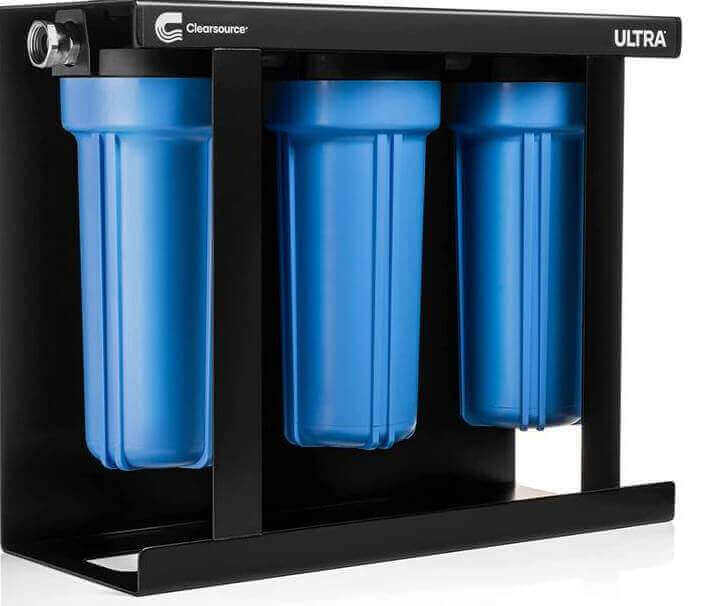
These are water filters that are typically installed under a sink between the water supply and the faucet. The filter cartridges are easily interchangeable, but a word of warning: If the water contains a high amount of inorganic contaminants like metals, an under-sink inline water filter can quickly become overwhelmed, requiring frequent filter changes.
Most inline water filters are designed for water from municipal water sources that have had some degree of treatment before distribution to homes, or well water that has been treated with either an iron filter, water softener, or both.
Faucet Filters
Faucet filters attach directly to a faucet in a sink and are inexpensive, easy to use, and the filters are easy to change. The caution gets back to the overall quality of the water.
They’re better than nothing, but any water that is heavily saturated with metals like iron or other contaminants will quickly overwhelm a faucet filter, resulting in a very slow flow of water when the filter is engaged and frequent filter changes. A lot also depends on whether or not you can still get water out of the tap at the sink.
Kitchen Water Filter
Water filters built into 1 and 2 gallon pitchers and containers have become very popular over the last few years. Brita is a common brand many people are familiar with. Tap water is poured into the top of the pitcher and a replaceable filter traps varying degrees of contaminants to further purify the water.
It’s an easy and economical solution to water filtration, but once again, the overall quality of the water will affect how long the filters last before requiring replacement. Many of these pitchers have an indicator telling you when it’s time to change the filter.
If for some reason the water is not running from the kitchen faucet, this gives you a way to filter and store water in the kitchen where clean water is most often needed.
Countertop Gravity Fed Water Filters and Purifiers
Think of these as a pitcher water filter on steroids. They usually are designed to sit on a countertop, although some are free standing. They are designed to hold and filter a large quantity of water—up to 3 gallons at a time.
The filters are also easy to replace, but once again, the overall quality of the water will affect how long the filters last.
Portable Water Filters and Purifiers

These are typically positioned as camping and backpacking water filters and purifiers, although they can be used in any emergency. They are small, handheld, and use a small pump or lever with a hose attached to the filter housing to draw the water from a source with another small hose to distribute the filtered water.
Some have a ceramic filter to remove microbes and other organic contaminants, and the filters are easily interchangeable. They make sense for onsite water harvesting from ponds and creeks to at least get a head start on water purification while you collect it.
Water Treatment Tablets for Immediate Use
Water treatment tablets were originally designed for use by the military and have found their way to campers, hikers, and backpackers. They are either iodine or chlorine based and are used to kill microbes in drinking water.
The typical duration for disinfecting is 30 minutes, and there are also neutralizing tablets sometimes used to reduce the off flavors from the iodine or chlorine. A common brand name is Potable-Aqua.
Water Treatments for Long-Term Storage
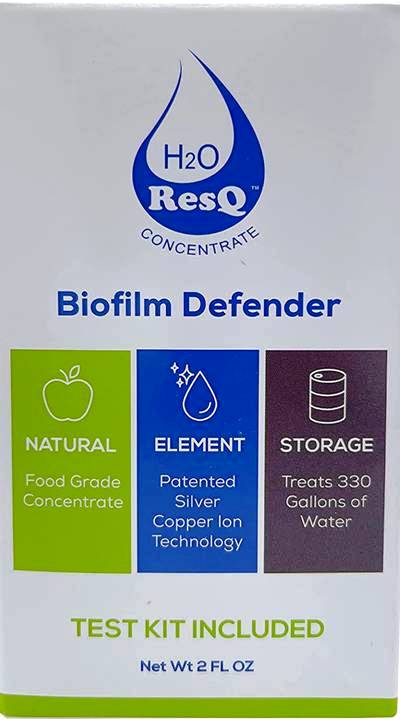
Even water that has been treated, filtered, and purified is subject to contamination over a long duration. A chemical water treatment designed to inhibit the growth of microbes and fungus for long-term water storage is a wise decision.
The Basics of Boiling for Purification
The simplest and most direct approach to water purification for immediate use is boiling. The minimum time for disinfecting water through boiling is 3 minutes. And don’t assume that bringing water to a brief boil before using it for cooking will be effective.
Boil the water for 3 full minutes before adding any other ingredients for cooking. If in doubt about any previously purified and stored water, boil it for 3 minutes.
One thing to remember is that boiling will not clarify murky or muddy water. Filter it first, and if you don’t have immediate access to a filter, you can always improvise one to clarify the water before boiling.
Water Storage
Water storage after the collapse is a whole different proposition than stockpiling some water for a few days without power after a natural disaster. It’s a time to think about serious and long-term storage. That means you’ll need to think about storing not only large quantities but also smaller amounts that will be easily portable around the house.
The fact of the matter is that without easy access to running water, the whole task of water collection, purification, and storage will become a daily chore. We’ll cover a range of storage solutions, and some of the implications of storing water.
Date Your Water Storage
Any stored water should be purified in clean containers and marked with the date it was bottled and stored. Any grey water from a previous use should also be marked as grey water, dated, and used as soon as possible. Grey water is the water most likely to contain residual bacteria, and it will spoil quickly.
A Note on BPA’s
Many plastics contain BPA’s. BPA stands for bisphenol A, an industrial chemical that has been used to make certain plastics and resins since the 1950s. BPA is found in polycarbonate plastics and epoxy resins. Polycarbonate plastics are often used in containers that store food and beverages, such as water bottles. They may also be used in other consumer goods.
Some research has shown that BPA can seep into food or beverages from containers that are made with BPA. Exposure to BPA is a concern because of the possible health effects on the brain and prostate gland of fetuses, infants, and children. It can also affect children's behavior. Additional research suggests a possible link between BPA and increased blood pressure, type 2 diabetes, and cardiovascular disease.
Many plastic storage containers are marked as “BPA Free.” Look for those markings before using any container for long-term storage. In the short term you may be okay, but if you want to be on the safe side, BPA-free is the way to go.
From Canning Jars to Holding Tanks
How you store your water depends a lot on how you use it. As a general rule, it makes sense to have some water stored in portable containers and a good amount of water in larger drums and tanks. You’ll also need to give some thought to how you draw the water from a large barrel or tank, although many come with spigots installed.
Here are the possibilities for a range of water storage solutions:
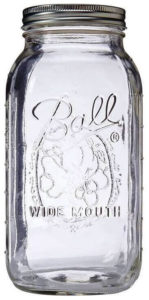
Glass Canning Jars
The great thing about storing water in glass canning jars is that they can be processed and tightly sealed, allowing for long-term storage without the addition of chemical treatments for extended storage. Larger jars up to ½ gallon sizes make the most sense.
1-Gallon Water Jugs
Having some water stored in 1-gallon jugs makes for a highly portable solution, whether getting some water to the kitchen or the bathroom or taking it on the road.
5-Gallon Bottles
These are the large water bottles you usually see sitting on top of water coolers. They are usually BPA-free, and the water has been purified and the bottles commercially sealed.
Most importantly, they’re reusable, and while they aren’t as portable as smaller containers, they’re relatively inexpensive and a proven water storage solution. You can also buy the empty jugs online.
You can also buy fairly inexpensive water coolers to hold the jugs and make dispensing easy.
5-Gallon Buckets
5-gallon buckets can be used not only for water storage, but they are a great way to collect and transport water. They’ll be heavy but light enough to allow for transport. A gallon of water weighs 7.5 pounds, so a 5-gallon bucket will be upwards of 35 pounds total.
There are also lids that can be attached, but any water stored in 5-gallon buckets should be purified and treated with a water treatment if storage extends beyond a couple of weeks. Make sure they are “food grade” plastic and BPA-free.
45 to 55 Gallon Water Barrels
There are specially designed water barrels for water storage that are usually in 45 to 55 gallon sizes. Most of them are blue in collar, BPA-free, and have a bung hole in the top with a locking cap. A hand pump is most commonly used to draw water from the barrel. Any water stored in a container this size should have a water treatment added.
What’s critical is that they be stored on a sturdy and well-supported floor space. A 55-gallon barrel will weigh up to 400 pounds. Combining more than one barrel in one space can overwhelm a poorly supported floor.
A concrete slab is the best location in a basement or garage, but for those living in an apartment or high-rise condo, be mindful of the weight of any large-capacity water storage.
Large Capacity Water Storage
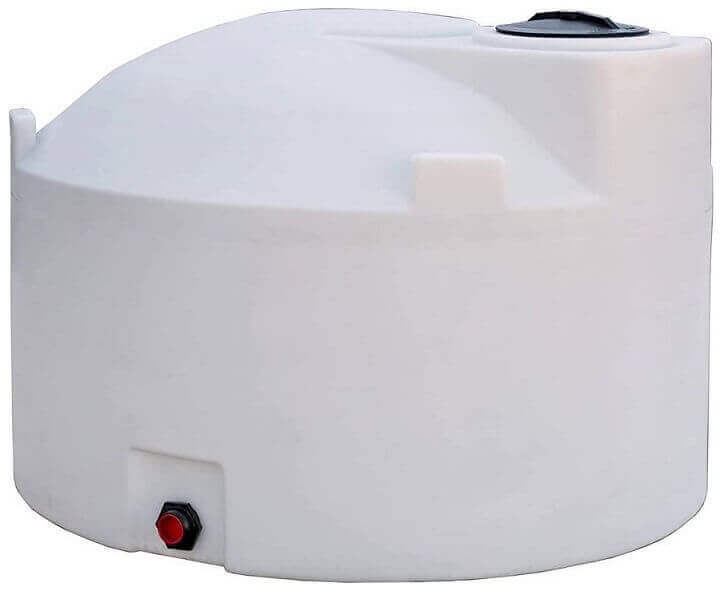

There are commercially manufactured water barrels and tanks that can hold up to 550 gallons of water. Most are located at ground level on a well-supported foundation. 550 gallons of water weighs 4,000 pounds, or two tons. They’re typically stored outdoors or on a concrete slab in a garage or basement.
Home Water Towers
Water towers depend on gravity to feed water from a large tank to a home or building.
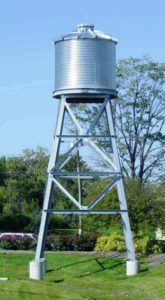
The amount of support and structural integrity needed for a water tower is significant, but many people avoid the danger of a poorly designed tower structure by placing a water tank on a nearby hill or rise that is above the level of the home or building. That allows water to be delivered by gravity, although a pumping mechanism will be needed to refill the tank in addition to a nearby source of fresh water.
Ram pumps in a nearby spring creek or river are often used to fill these kinds of water tanks on homesteads. The water from the towers usually has to be purified for drinking, but it is typically used directly from the tank for general watering of vegetable gardens and washing.
The Best Solution is the One You Can Afford
The good news with long-term water storage is that it’s typically a one-time investment. The bad news is that some of these solutions can be expensive.
The key thing is to obviously do the best you can and both remember and understand that water is one of our most critical needs for survival. If all you can do is put a swimming pool in the backyard, that’s a good head start for long-term emergency water security. Then again, some of us would prefer that water tower.
Like this post? Don't Forget to Pin It On Pinterest!


